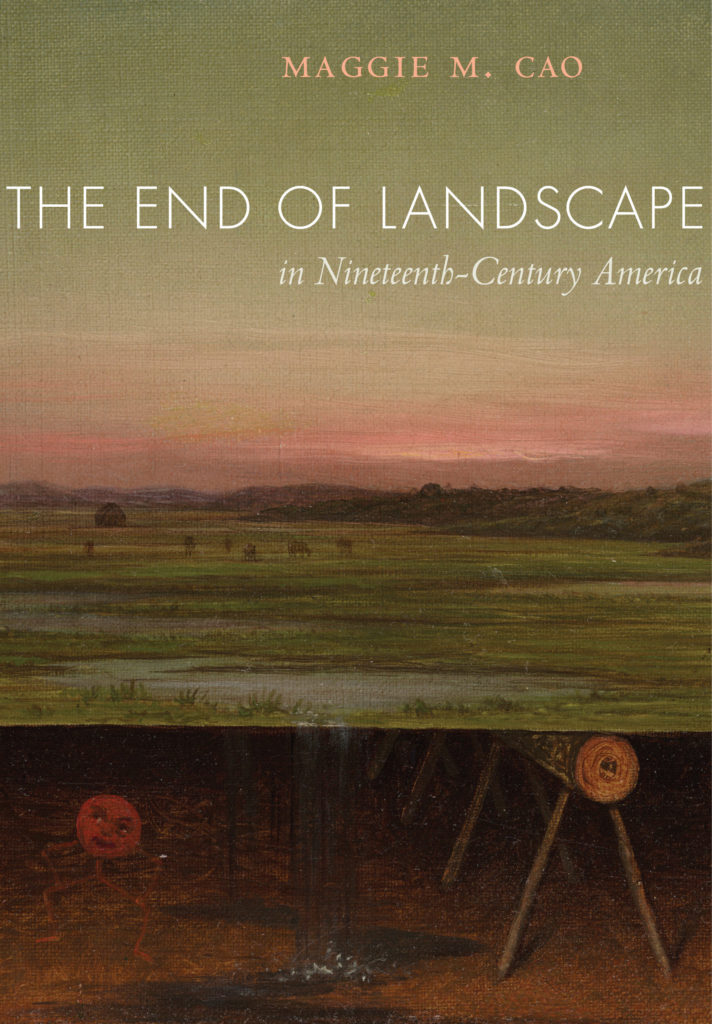My 2018 book, The End of Landscape in Nineteenth-Century America, examines the dissolution of landscape painting in the late nineteenth-century United States. In it, I consider the fate of landscape painting, a major cultural project for nineteenth-century Americans, in tandem with modernity’s effect on land itself. In the nineteenth century United States, both landscape painting and actual landscapes were vulnerable. In the same period that cultural or epistemic shifts refashioned landscape painting, actual landscapes came under threat from railroad companies, real estate moguls, and land engineers eager to transform indigenous territories into tourist parks, squatter refuges into ornate estates, and wetlands into dry earth. Depletion narratives concerning land, often told by environmental and cultural historians, can be just as richly illuminated through the absurd yet evocative pictorial experiments that punctuate my book.
The End of Landscape features artists Albert Bierstadt, Martin Johnson Heade, Ralph Blakelock, Abbott Thayer, and John Singer Sargent, who each produced artworks at the genre’s unsettling limits—landscapes that self-destruct, masquerade as currency, or even take flight. I shows that their experiments in landscape played a crucial role in the American encounter with modernity. Landscape, I argue, is the genre through which American artists most urgently sought to come to terms with the modern world.
Order the book from the University of California Press or on Amazon
Praise for The End of Landscape
“Imaginative leaps…abound in this brilliant book; Cao makes them with breathtaking historical sophistication.”—Journal of American History
“It must be said that [Cao’s] arguments are frequently highly creative and imaginative.”—Winterthur Portfolio
At once deeply grounded in the material, cultural, and discursive conditions of painting in the later nineteenth century, Cao’s important book—by explaining the eccentric logic of landscape’s endgames—also refigures our understanding of its beginnings and its futures.”—Angela Miller, Professor of Art History, Washington University in St. Louis
“A brilliant and timely reinterpretation of painters wrestling with the economic and environmental conditions of modernity. Cao draws our gaze away from the canon of American landscape to focus on experimental works that betrayed the limits and inadequacies of the genre. With evocative prose and interpretive gusto, Cao offers pairings of things that delightfully surprise the reader—butterflies and rail cars, nocturnes and banknotes—thereby challenging us to see unexpected phenomena in landscape representation, from foldings and closures to wastelands and decay.”—Wendy Bellion, Associate Professor of Art History, University of Delaware

